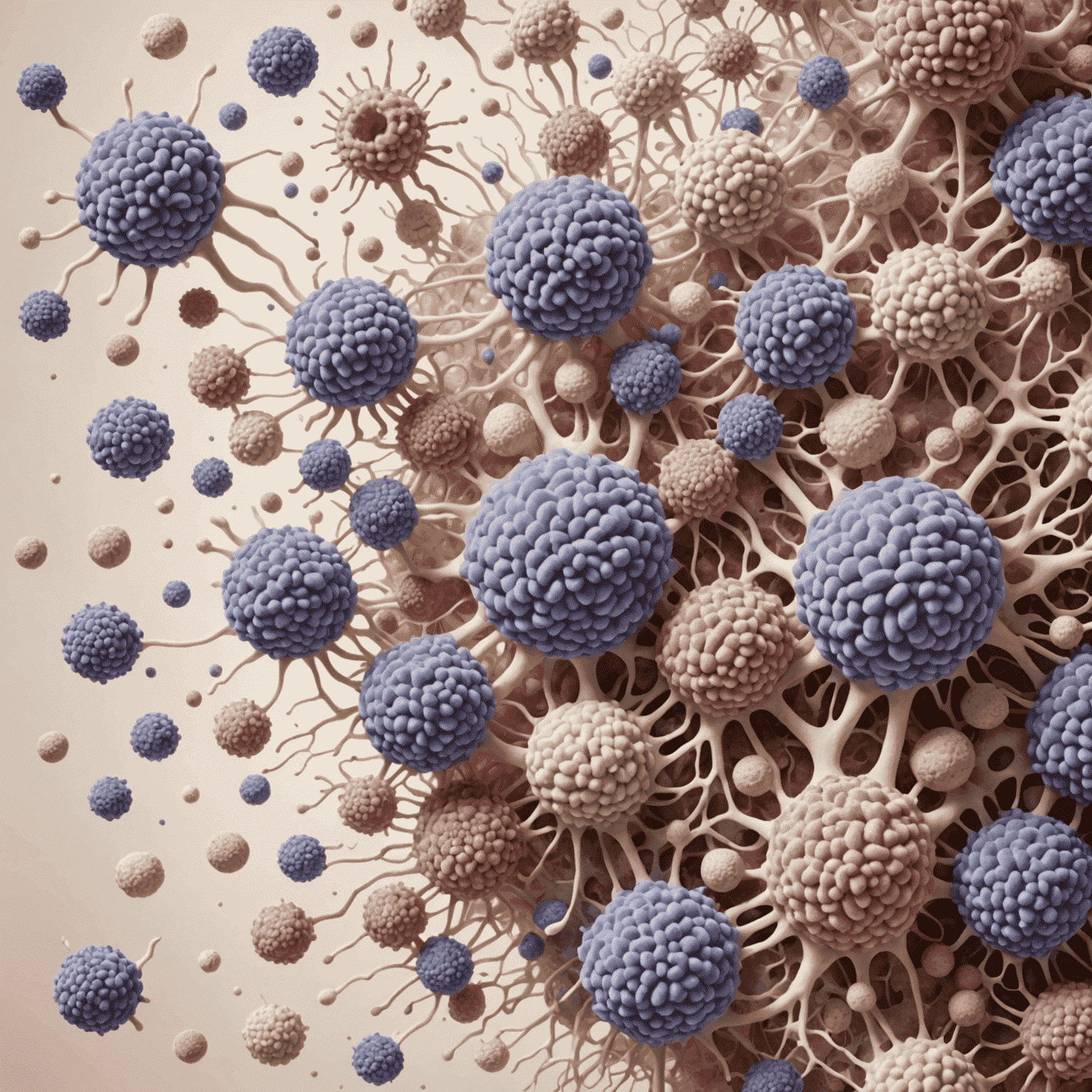The Silent Symphony of Our Immune System

Our immune system is a marvel of biological engineering, working tirelessly behind the scenes to protect us from a myriad of threats. Let's embark on a journey to explore the intricate workings of this silent guardian.
The Sentinels of Our Body
At the forefront of our immune defense are the white blood cells, or leukocytes. These microscopic warriors patrol our bloodstream, ever vigilant for signs of invasion. Like a well-trained army, each type of leukocyte has a specific role in the immune response.
Recognition: The Key to Defense
One of the most fascinating aspects of our immune system is its ability to distinguish between "self" and "non-self." This recognition system is so sophisticated that it can identify harmful bacteria, viruses, and even mutated cells that could lead to cancer. The major histocompatibility complex (MHC) plays a crucial role in this process, acting like a cellular ID card that helps immune cells identify potential threats.

The Adaptive Response: Learning and Remembering
Perhaps the most remarkable feature of our immune system is its ability to adapt and remember. When exposed to a new pathogen, our body launches a primary immune response. This process not only fights off the current threat but also creates memory cells. These specialized cells allow for a faster and more efficient response if we encounter the same pathogen again, forming the basis of immunological memory.
The Delicate Balance of Inflammation
Inflammation is a double-edged sword in our immune arsenal. While it's a crucial part of the healing process, helping to isolate damaged areas and promote repair, unchecked inflammation can lead to a host of health issues. Our immune system must constantly walk this tightrope, balancing protective inflammation with the need to avoid collateral damage to healthy tissues.
The Microbiome Connection
Recent research has shed light on the intricate relationship between our immune system and the microbiome – the vast community of microorganisms that inhabit our bodies. Far from being passive bystanders, these microbes play an active role in training and modulating our immune responses, highlighting the complex interplay between our bodies and the environment.

Conclusion: A Testament to Biological Complexity
As we unravel the mysteries of our immune system, we're continually amazed by its sophistication and adaptability. This silent symphony of cells, proteins, and chemical signals works in harmony to keep us healthy, often without us even being aware of its constant vigilance. Understanding and appreciating this intricate system not only deepens our wonder at the complexity of human biology but also opens new avenues for medical advancements and improved health outcomes.